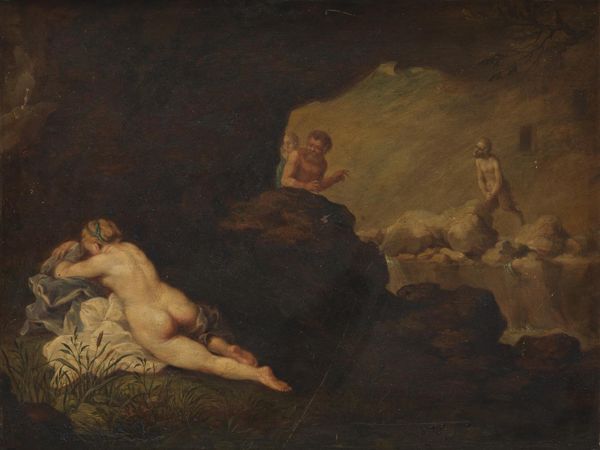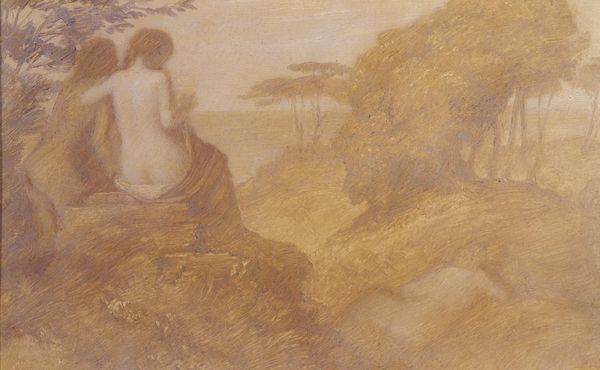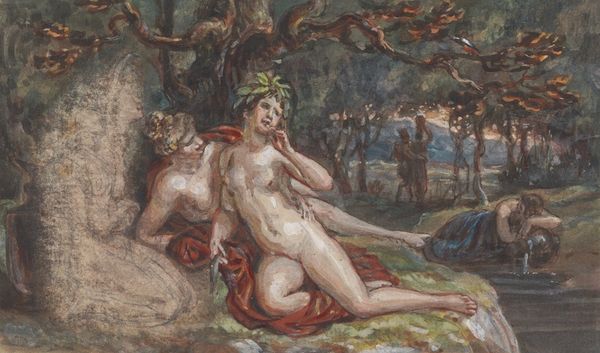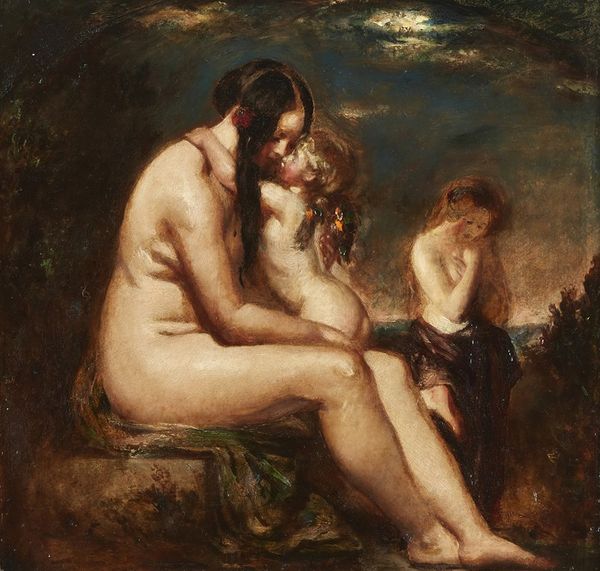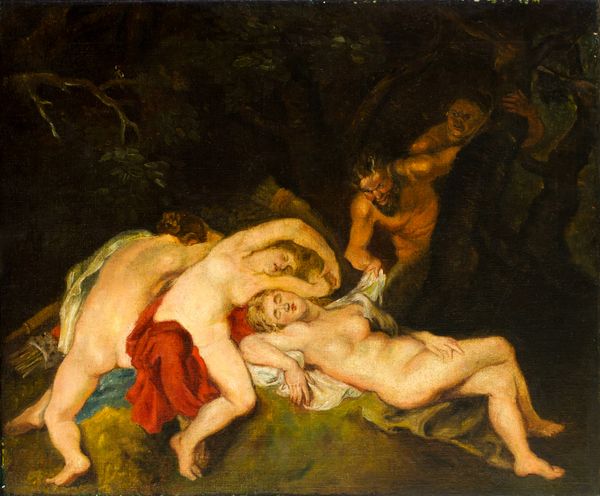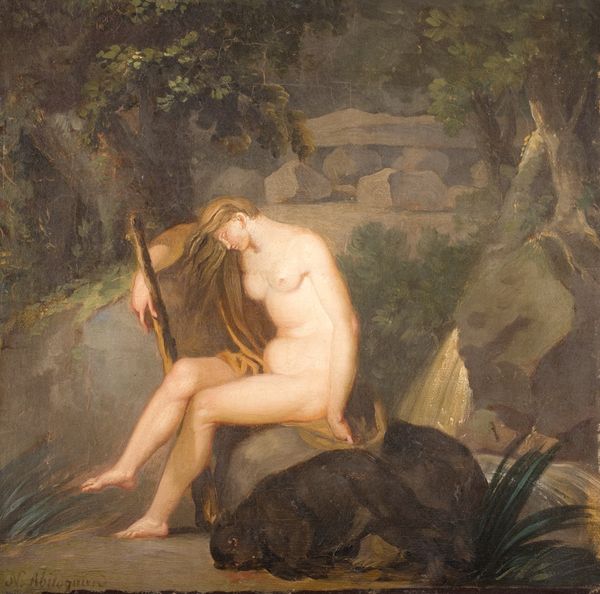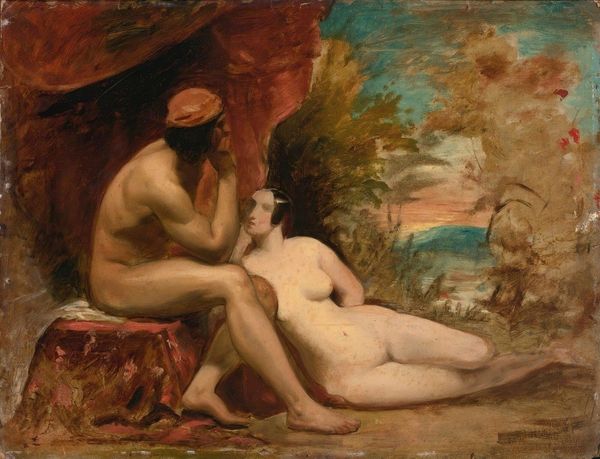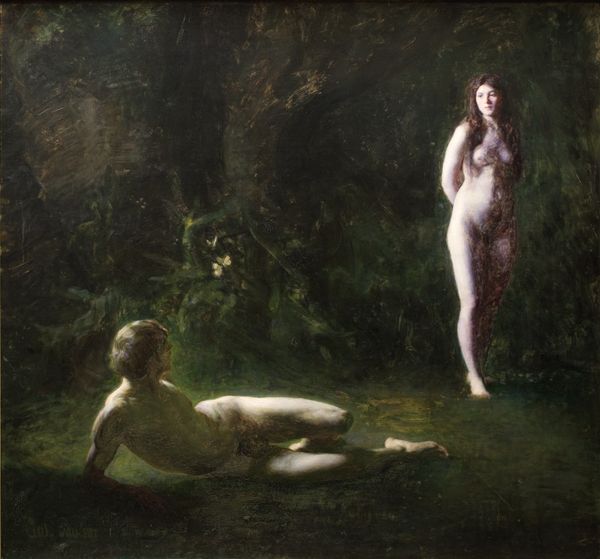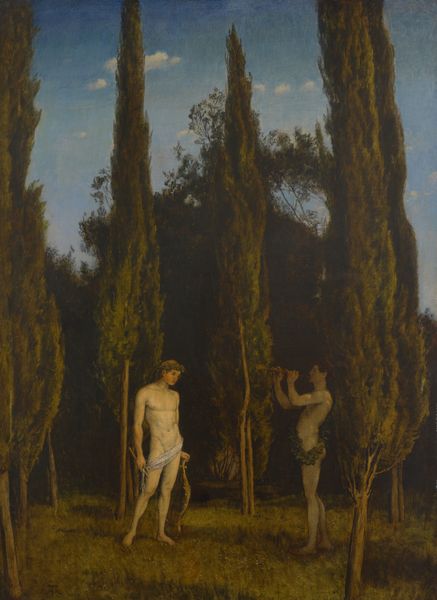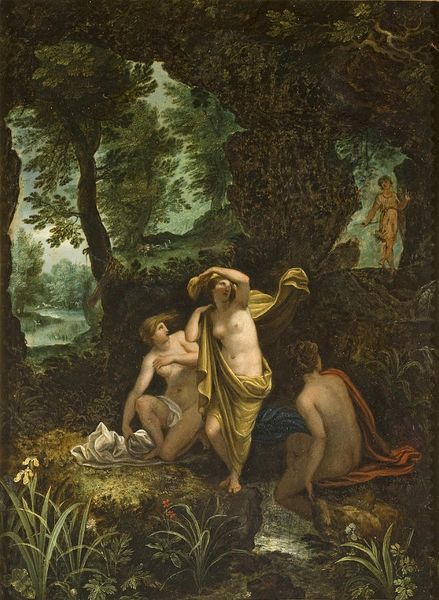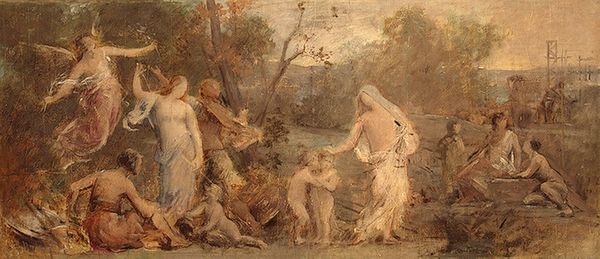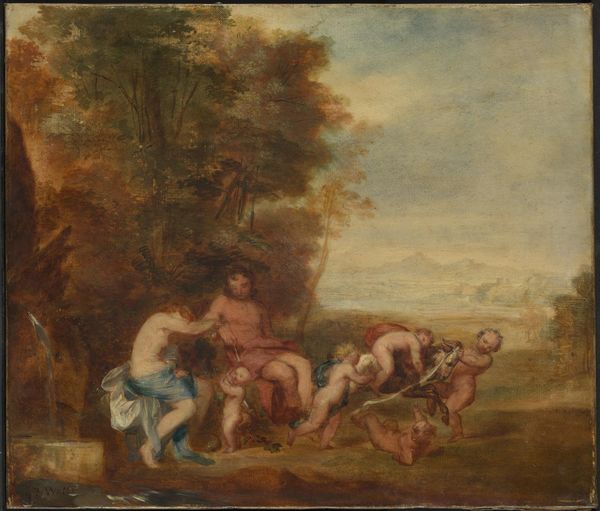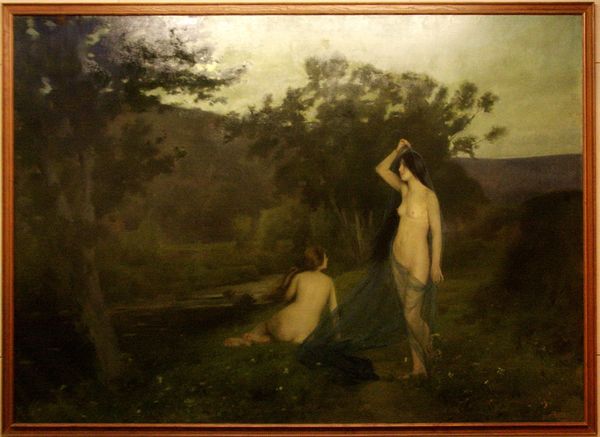
Copyright: Public Domain: Artvee
Editor: This is Jean-Jacques Henner's "Naïades," created between 1873 and 1877 using oil paint. I'm struck by how earthy it feels. It's almost like the figures are emerging directly from the soil itself. What strikes you most about it? Curator: It's precisely that earthiness, that raw materiality, that fascinates me. Look at the paint application: thick, almost sculptural in places. It emphasizes the physical act of creation, the artist wrestling with his materials to conjure these figures. Do you think about how the pigment itself was sourced and ground? Editor: That’s interesting. I hadn’t really considered the materiality of the paint itself. Is that important to how we understand the work? Curator: Absolutely. Henner is working within the established academic tradition of nude painting, but this rendering feels deliberately less polished, less idealized. Consider the conditions in which he was creating, the rising industrialization of art supply production. How does that inform the almost primitive feel of the painting? Editor: So, you're suggesting he's responding to industrial production by emphasizing handcraft and raw materials? Curator: Exactly. The act of painting, the materiality, becomes a statement in itself. We are looking at not just figures but also the evidence of labour. He seems to question the distance between labor and art by doing this. Look at how figures emerge organically; it's as though he is suggesting that the water nymphs arise naturally. Editor: That gives me a whole new way of looking at it! I was so focused on the mythology that I missed the commentary on production and value. Curator: Indeed. By considering the processes, labor, and materials behind the creation, we challenge traditional hierarchies that separate fine art from other forms of making and unearth other layers of meaning embedded in art.
Comments
No comments
Be the first to comment and join the conversation on the ultimate creative platform.
